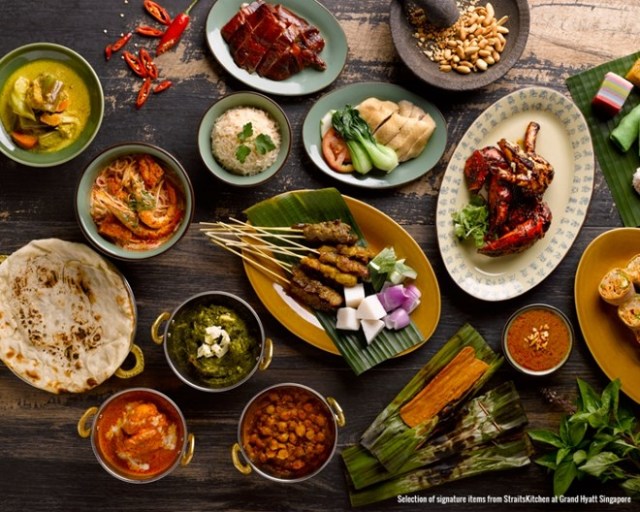In Singapore, food is viewed as crucial to its national identity and a unifying cultural thread. Singaporean literature declares eating a national pastime and food a national obsession. Food is a frequent topic of conversation among Singaporeans. Religious dietary strictures do exist. Muslims do not eat pork and Hindus do not eat beef. There is also a significant group of vegetarians/vegans. People from different communities often eat together, while being mindful of each other's culture and choosing food that is acceptable for all.
Singapore is geographically located in between the Pacific and Indian oceans but it also has the shape of a peninsula and an island at the same time, where various cultures and trades used to and continue to occur. Indonesia is located to the south, Thailand, China, the Philippines and Malaysia are located to the north and India is located to the west. Since Singapore's position is between various Asian countries, there is a diversity in food and culture. The culture of Singapore is made up of diverse influences from different continents and countries. This led Singapore cuisine to be mixed-cultural society food. Singaporean cuisine has also been influenced by it's colonial history, as it established as a British colony from the early 19th century until the mid-20th century when it became part of Malaysia before becoming independent. Singapore was also occupied by Imperial Japan during the Second World War. Colonization of Japan also influenced Singaporean cuisine.
Singaporean food can be divided into five types: meat, seafood, rice, noodles, dessert and snacks. Singapore is especially renowned for its seafood. Chili crab and black pepper crab are two quintessential dishes that dominate the scene and are greatly recommended to tourists. Another favourite is sambal stingray. In the meat category, Hainanese chicken rice is the most popular dish. Essentially, it is rice cooked with chicken fat, served with boiled chicken, accompanied with chili sauce. Three noodle dishes stand out in Singapore cuisine. "Fried Hokkien mee", fried egg noodles with prawns, sliced pork and gravy, "Nyonya laksa", rice noodles served in a coconut prawn broth and "Char Kuey Teow", stir-fried rice noodles with prawns, Chinese sausage, lard and cockles. In the dessert category, tau-suan is one of many types of desserts commonly found in hawker centres around Singapore. T?u-suàn (split mung bean soup), is a dessert of Teochew origin. It is a sweet and starchy soup made from split mung beans, usually eaten with Youtiao. In the snack category, kaya toast is the representative dish, primarily due to the use of kaya.
A common greeting for the Singaporean Chinese is the question "Have you eaten?", asked in the various Chinese dialects. It is one way to express a greeting to another person. It is also possible to assume that this is how Singaporeans think about the meal and food.



 Descargar Google Chrome
Descargar Google Chrome Descargar Mozilla Firefox
Descargar Mozilla Firefox Descargar Opera
Descargar Opera